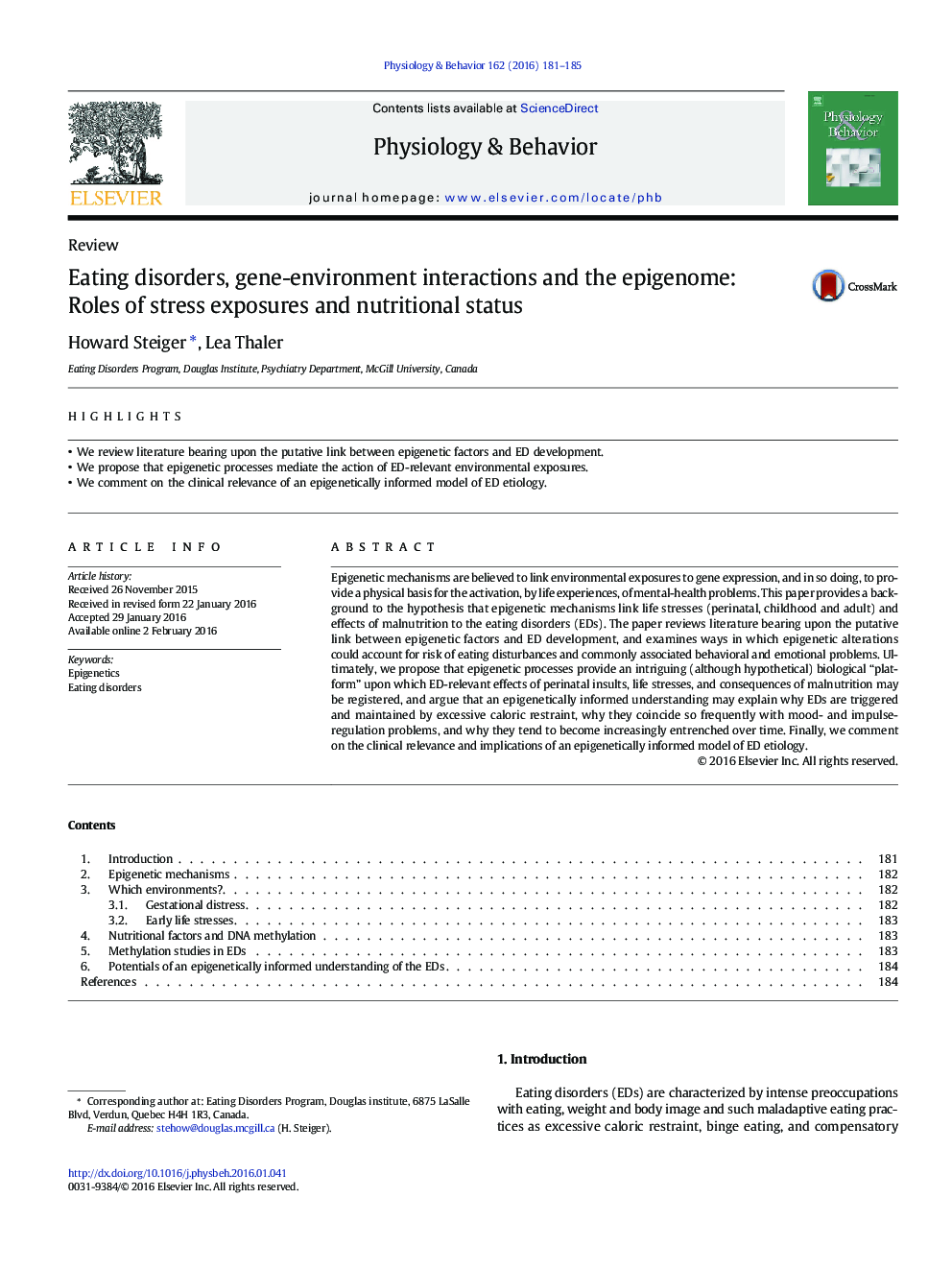| کد مقاله | کد نشریه | سال انتشار | مقاله انگلیسی | نسخه تمام متن |
|---|---|---|---|---|
| 2843915 | 1571156 | 2016 | 5 صفحه PDF | دانلود رایگان |
• We review literature bearing upon the putative link between epigenetic factors and ED development.
• We propose that epigenetic processes mediate the action of ED-relevant environmental exposures.
• We comment on the clinical relevance of an epigenetically informed model of ED etiology.
Epigenetic mechanisms are believed to link environmental exposures to gene expression, and in so doing, to provide a physical basis for the activation, by life experiences, of mental-health problems. This paper provides a background to the hypothesis that epigenetic mechanisms link life stresses (perinatal, childhood and adult) and effects of malnutrition to the eating disorders (EDs). The paper reviews literature bearing upon the putative link between epigenetic factors and ED development, and examines ways in which epigenetic alterations could account for risk of eating disturbances and commonly associated behavioral and emotional problems. Ultimately, we propose that epigenetic processes provide an intriguing (although hypothetical) biological “platform” upon which ED-relevant effects of perinatal insults, life stresses, and consequences of malnutrition may be registered, and argue that an epigenetically informed understanding may explain why EDs are triggered and maintained by excessive caloric restraint, why they coincide so frequently with mood- and impulse-regulation problems, and why they tend to become increasingly entrenched over time. Finally, we comment on the clinical relevance and implications of an epigenetically informed model of ED etiology.
Journal: Physiology & Behavior - Volume 162, 1 August 2016, Pages 181–185
